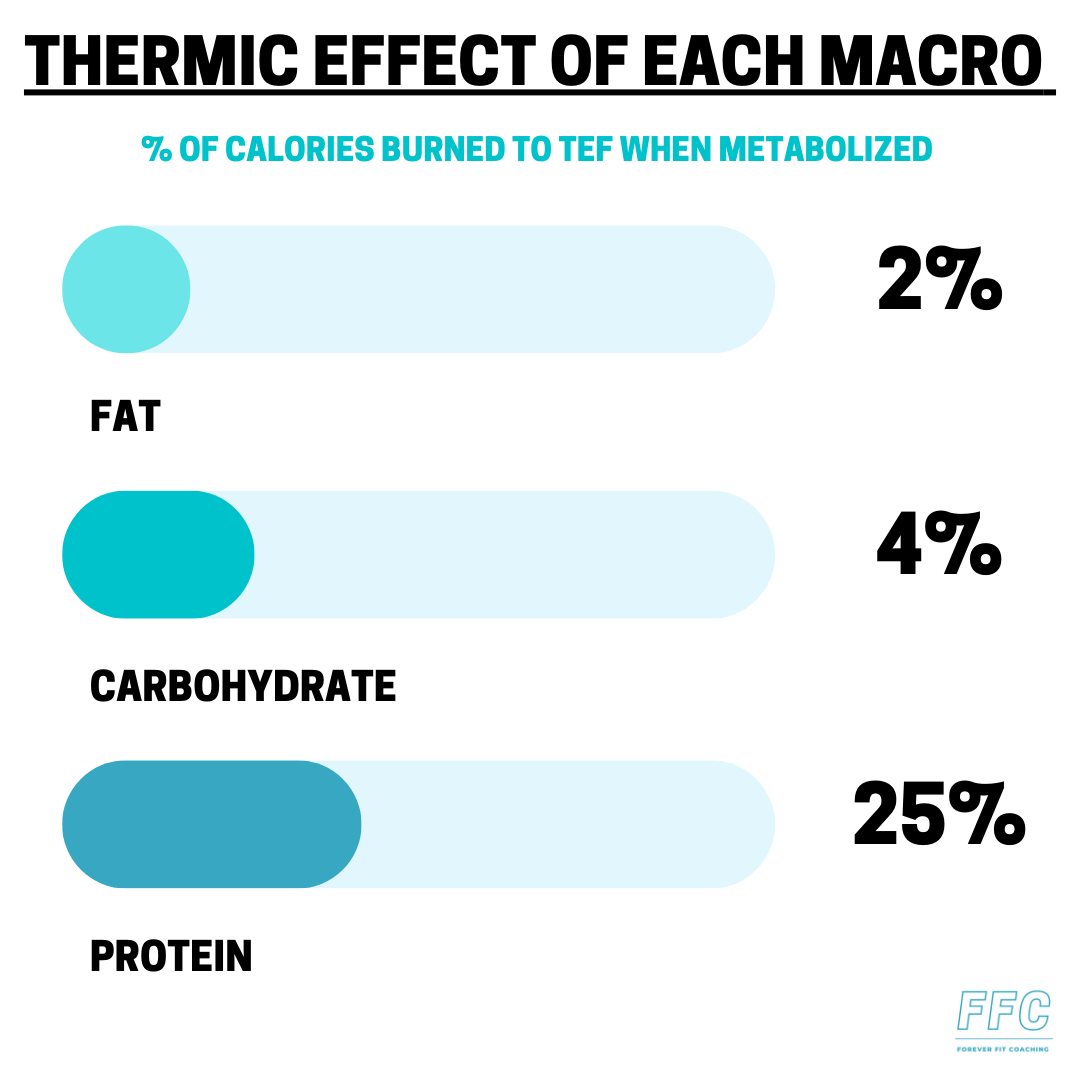In part 1 of this article, which you can read below, we discussed the components of energy balance in our body (metabolism) and how each one uses energy, or calories.
I highly encourage you to read, or re-read that article. In a world where you are bombarded with hot takes and half truths it will benefit you to have a scientific understanding of the relatively simple mechanisms your body uses to burn calories. That can be a foundation for you that is more accurate than an Apple Watch and more research based than Tik-Tok takes.
The Thermic Effect of Food
A simple review: Our body expends energy to consume energy, or put another way there is a calorie cost to the food we eat. Some foods require very little energy to digest, breakdown, and metabolize. Other foods have a larger calorie cost to metabolize, meaning consuming more high-calorie cost foods than the low-calorie cost foods can result in a more thermogenic (calorie burning) environment for your body simply by choosing better foods.

Foods that have a low thermic effect (calorie burn):
Fats. Foods that are mainly comprised of fat only use 1-3% of the calories consumed to metabolize this energy source. For 100 calories consumed from fats, only 1-3 calories are burned off by eating them.
Cooking oils like olive oil, coconut oil, vegetable oil, etc
Nuts or seeds like almonds, cashews, peanuts, etc
Nut butters like peanut butter, almond butter, etc
Eggs (not egg whites, that fat is in the yolk)
Cheeses
Milk
Carbohydrates. Carbs use about 4% of the calories consumed to metabolize this energy source. For 100 calories consumed from carbs, only about 4 calories are burned off by eating them.
Sugar food like candy or soda
Bread
Pasta
Rices of all kinds
Potatoes of all kinds
Oats or museli
Vegetables
Fruit
Legumes like black beans, pinto beans, kidney beans, etc
Foods that have a high thermic effect (calorie burn):
Proteins. Protein uses between 10-30% of the calories consumed to metabolize this energy source. For 100 calories consumed from protein, 10-30 calories are burned off by eating them. That’s about 6 times more calories burned simply by eating protein than carbs or fats.
Leaner meats like chicken breast, lean ground beef, lean steaks, turkey, shrimp, pork chop, beef or steak jerky
*Less lean meats are still mostly protein, but won’t have as high a TEF due to more fat present. (These are the foods that will range closer to 10% TEF than the higher end of 30%.) Foods like chicken thighs, fish like salmon or tilapia, 80% ground beef, ribeye steaks, sausage, bacon or other fatty pork cuts.
Non fat Greek yogurt
Skyr (Icelandic ultra-filtered yogurt)
Egg whites
Protein powder or protein bars (with under 5 grams of carbs)
An effective and healthy diet is a well-balanced diet.
I am not demonizing fats or carbohydrates here, only displaying the large difference between those energy sources and protein when it comes to how our body metabolizes the food we eat.
Quality fats are needed for healthy joints, skin, and hormone health.
Carbohydrates are needed for daily energy and recovering from exercise.
Protein is needed for great immunological function, strong bones and joints, building muscle, and healthy blood sugar response.
So eating more protein burns more calories. How about a visual?
Take a look at the difference in calories burned in one week due to TEF in a low protein diet versus a high protein diet when overall calories are equated.

The difference? The high protein diet burned about 500 calories more a week by TEF. That’s 500 more calories burned without lifting a finger, only making different food choices.
It is worth noting, although we label this a high protein diet the macronutrients are balanced and healthy. Just look at the daily calories from each macro for the high protein diet:
450 calories from fat
624 calories from protein
924 calories from carbohydrates
Looking at those numbers, you can see consuming more protein doesn’t mean your diet is now low-carb, or low-fat. On the contrary, the average American diet is extremely low in protein and rather high in fats and carbs. Consuming more protein isn’t just for folks who want to pack on muscle. More protein helps everyone because our baseline of protein intake is so low.
Do you make similar resolutions every January but are yet to develop a healthy baseline that carries you through every season of life, making progress along the way? If you join our 1:1 coaching program, you will not only have the plan and accountability that comes with a coach, but you will also receive a nutrition education that levels you up. You can become independent and capable, you just need someone to guide you through all the health & fitness noise and show you what is effective and sustainable for you. Just click the button below and complete the application.




